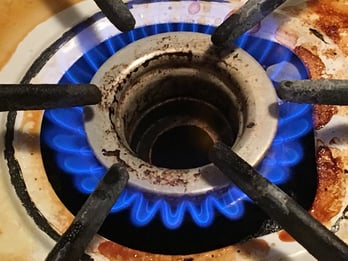 Did you know October is Fire Prevention Month? The purpose of this observance is to raise awareness and share fire safety tips that can keep you and your family safe. Hoarding is one topic that has received a lot of attention in recent years.
Did you know October is Fire Prevention Month? The purpose of this observance is to raise awareness and share fire safety tips that can keep you and your family safe. Hoarding is one topic that has received a lot of attention in recent years.
Approximately 1 in 20 Americans have hoarding tendencies. While there are several levels of hoarding, clutter can be extremely dangerous should a fire occur. Excessive clutter can make it difficult for firefighters or medical staff to reach you or a family member in an emergency.
Having an extensive collection of something that’s stored or displayed properly isn’t hoarding. In fact, insurance is available for people who have expensive collections. The difference is that hoarders collect excessive amounts of items that typically have no value. With only so much space in the home, accumulation often leads to losing access to areas like stairs and exits.
Here are some reasons why fire risk is increased.
1. Cooking.
For some of us, cooking can be a challenging task. Imagine if there’s a lot of flammable material near the cooking surface. It’s possible that a fire could occur at any moment. To prevent this, it’s best to keep the cooking area free from clutter.
2. Damaged electrical wiring.
The excessive weight of materials can cause electrical wiring to deteriorate. In addition, pests can go unnoticed and chew on the wires causing them to be exposed. Unfortunately, the exposed wires can lead to a fire.
3. Improper space around heaters.
As we approach the colder months, keeping our homes warm is crucial. Not only can clutter restrict airflow, but if a heater isn’t spaced adequately from flammable materials, it could cause a fire.
4. Candles.
Who doesn’t love candles, especially with all the different scents? We enjoy them during the colder months when the house is closed. But an open flame can ignite nearby materials very easily.
Here’s how you can help a friend or family member.
1. Be empathetic.
Hoarding is an illness that requires professional treatment. When talking to someone about it, don’t use words or gestures that may be upsetting.
2. Create an escape plan.
Getting out of a home or apartment is the key to survival if a fire occurs. When creating an escape plan, let the person know you’re just going to clear a path to a door or window. Re-assure him or her that you’re just moving items and not throwing them out. Once you’re finished, review and practice the evacuation route(s).
3. Ensure they have working smoke alarms.
It’s essential to test them regularly, but life is busy, and people forget. Getting into the routine of testing them when daylight saving time begins in spring and ends in fall can help you remember. It’s also a good time to install new batteries.
Do you have any suggestions or information you’d like to share? Please share them in the box below.
Source:
https://www.therecoveryvillage.com/mental-health/hoarding/related/hoarding-statistics/





